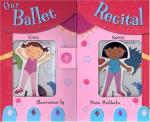|
This section contains 349 words (approx. 2 pages at 300 words per page) |
Chipboard is heavy paperboard made from recycled paper. Examples of chipboard include the backing of pads of paper, egg cartons, and stiffeners for photographs in mailing; it is chiefly used as boxboard and containerboard for corrugated packaging. Chipboard makes up the largest class of paper products consumed in the United States. While most cardboards are designed for strength and attractiveness for packaging and other purposes, chipboard is used when these qualities are not essential. When treated with wax, it is useful as a grease-proof packaging material used for bacon and motor oil containers.
A patent for the first machine for pasting sheets of paper together, forming chipboard, was granted in 1824 to an Englishman by the name of John Dickinson (1782-1869), inventor of the cylinder papermaking machine (1809). The cylinder papermaking machine has a wire screen fitted like a jacket around a cylinder that is immersed in a vat of pulp. Multiple layers of pulp are then worked together in the couching, or laying out, stage to form the chipboard. This type of machine is still used for the production of chipboard. American Thomas Gilpin (1776-1853) erected the first paper-machine in America in 1817; this was a cylinder machine suitable for the production of heavy paper from rags. The first patent for corrugated paper of the type used later in boxes was granted to American Albert L. Jones in 1871.
The early 1900s saw the development of a variety of cardboards and chipboards. In 1903, commercial use of corrugated containers began. By 1936, the use of chipboard packaging for milk containers was widespread. Consumer acceptance of frozen orange juice in 1948 led to the expansion of the frozen foods industry with its chipboard packaging. Wastepaper, consisting chiefly of recycled newspaper, is an important input material for paper mills in their production of chipboard. In 1990, chipboard consumed 51 percent of the wastepaper remaining in the United States after export. [Note: In Britain, the term chipboard refers to a wood product made from chips that are compressed and veneered. Used in construction and furniture manufacturing, this material is called particle board or hardboard in the United States.]
|
This section contains 349 words (approx. 2 pages at 300 words per page) |


